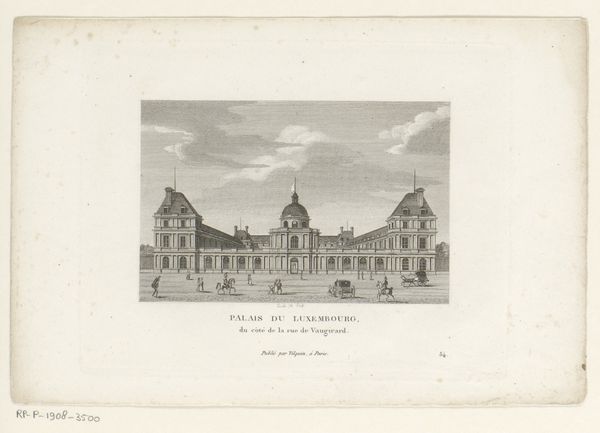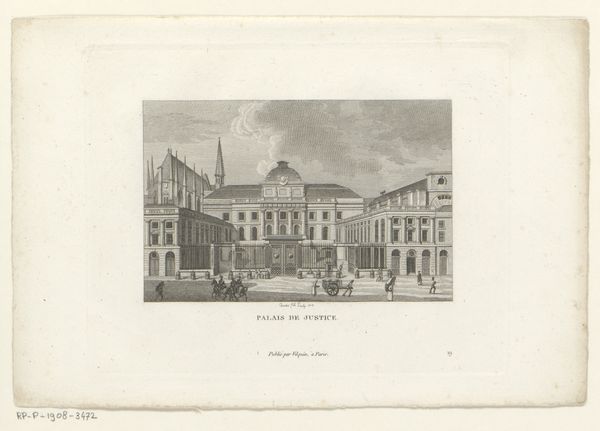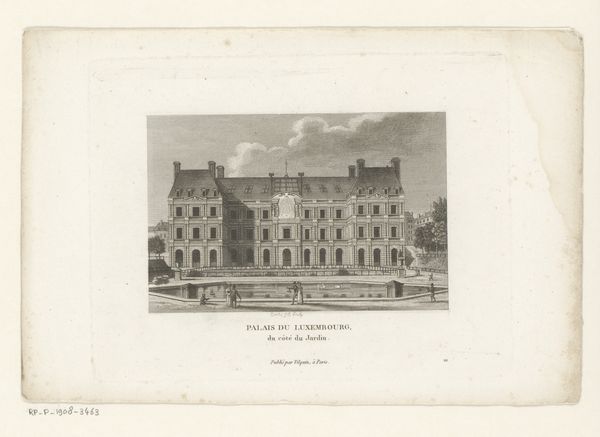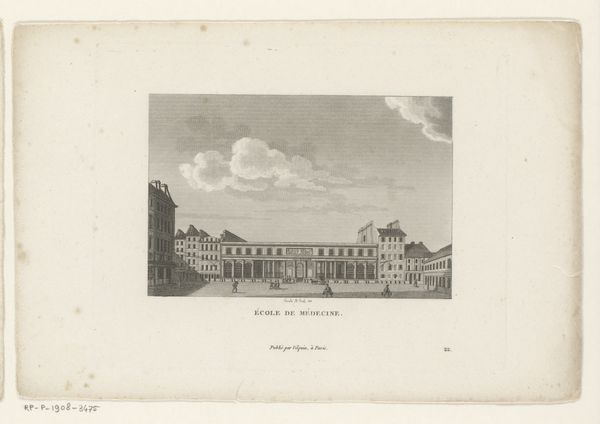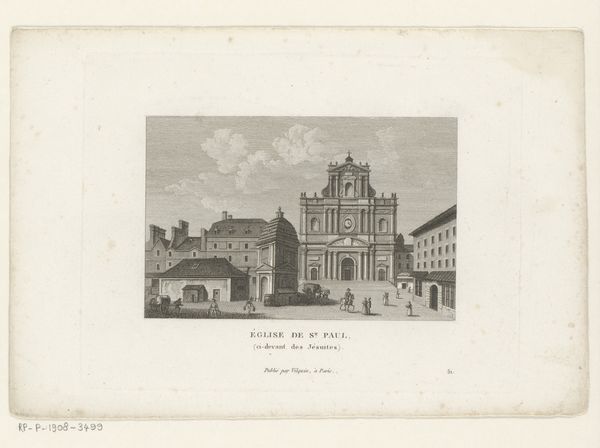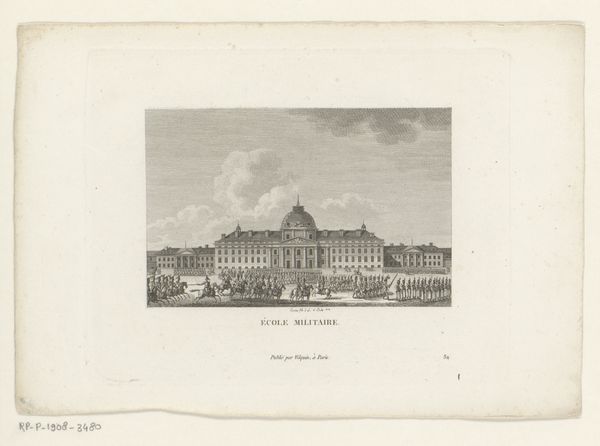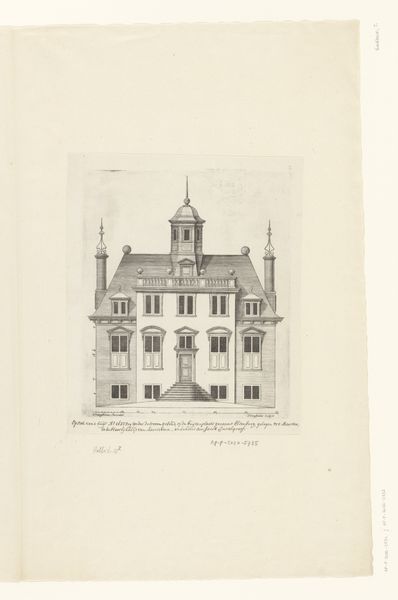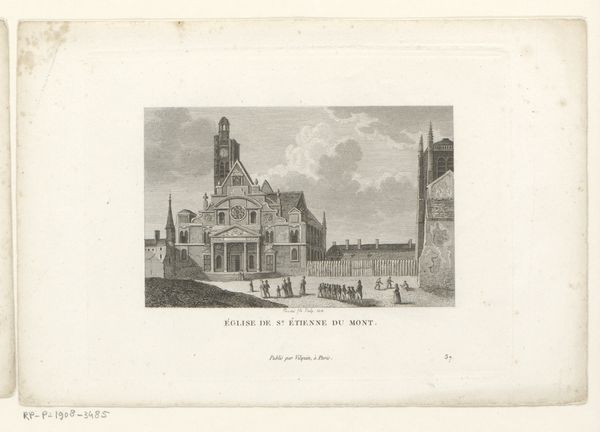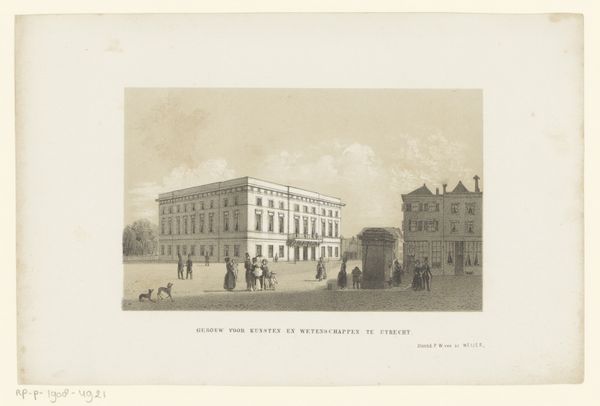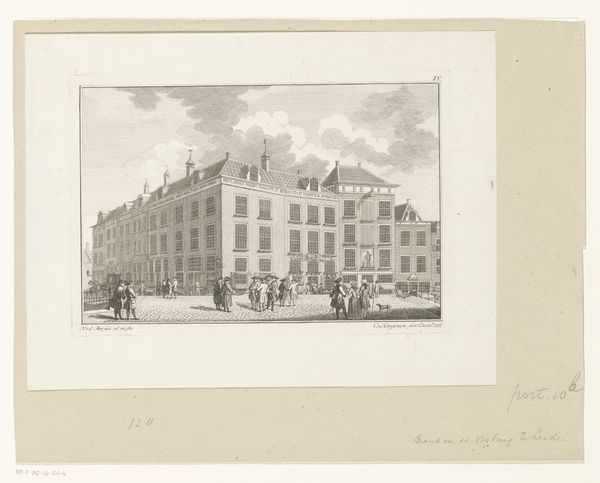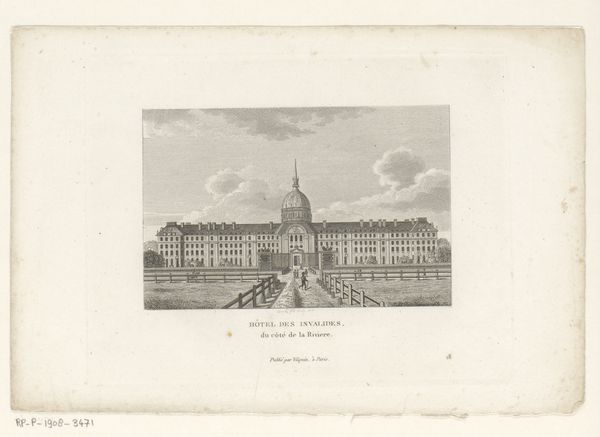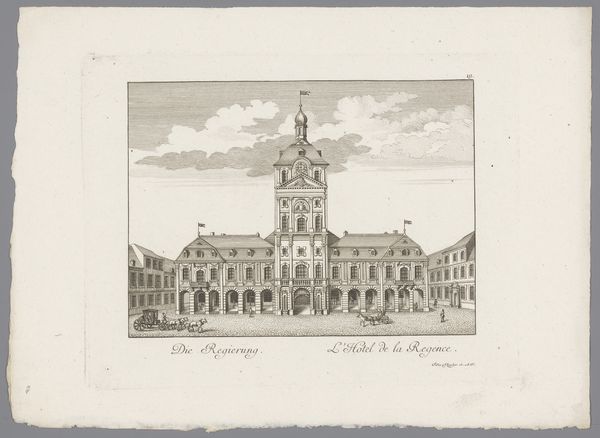
print, etching, engraving, architecture
#
neoclacissism
# print
#
etching
#
old engraving style
#
cityscape
#
engraving
#
architecture
Dimensions: height 119 mm, width 147 mm
Copyright: Rijks Museum: Open Domain
Editor: Here we have François Louis Couché's "View of the Paris City Hall," created in 1818. It's an engraving and etching, so a print. I'm struck by how… deliberate each line seems. How would you approach analyzing this piece? Curator: From a materialist perspective, let's consider the labor embedded within those deliberate lines. Think about the engraver, meticulously carving into the metal plate. This isn't just about replicating an image; it's about a highly skilled artisan shaping metal to produce multiples, intended for a specific, consuming public. The choice of engraving and etching itself—what does that signify in terms of accessibility and distribution compared to, say, a unique painting? Editor: That's a good point, it being reproducible would probably lower the barrier to ownership, even if it's still not "cheap." It does make me wonder, though, about the level of skill involved versus something mass-produced later. Curator: Exactly! Let's push further. Who would have been buying these prints of the Hôtel de Ville? And what did it signify to them to own a view of this specific building? Think about power structures, civic identity, perhaps even the evolving urban landscape and the emerging role of the bourgeoisie as consumers of art. How does the medium, engraving, mediate their relationship to this important symbol? Editor: So, it’s not just about the *image* of the City Hall, but the whole *process* of its creation and consumption. Like, who could afford to own this, what did owning it say about them...I hadn’t really considered it that way. Curator: And consider, too, the industrial production required even for "handmade" prints. The inks, the paper, the workshops… all parts of a material network far beyond a single artist. Thinking about these factors complicates simple notions of authorship and artistic intention, wouldn’t you agree? Editor: Absolutely. It recontextualizes the whole artwork and allows you to look at social layers as part of the artistic practice itself. Thanks!
Comments
No comments
Be the first to comment and join the conversation on the ultimate creative platform.
